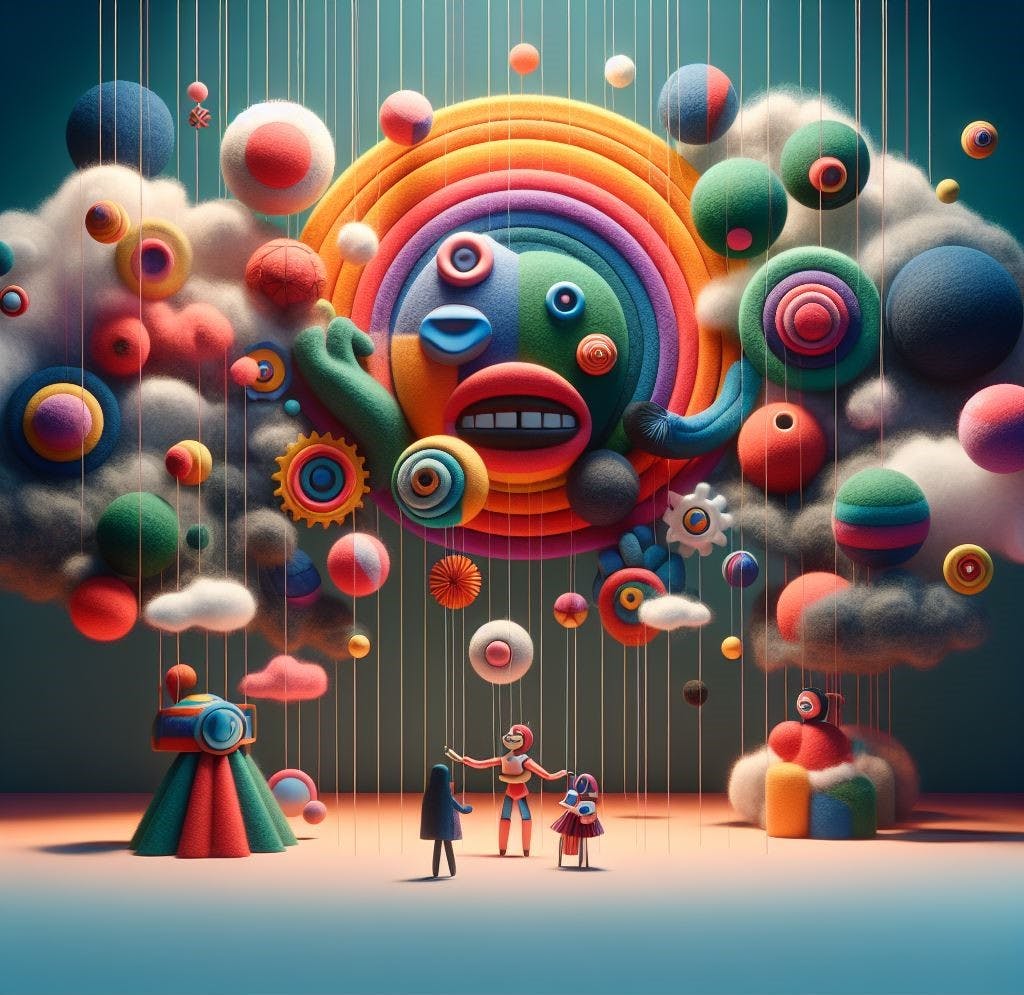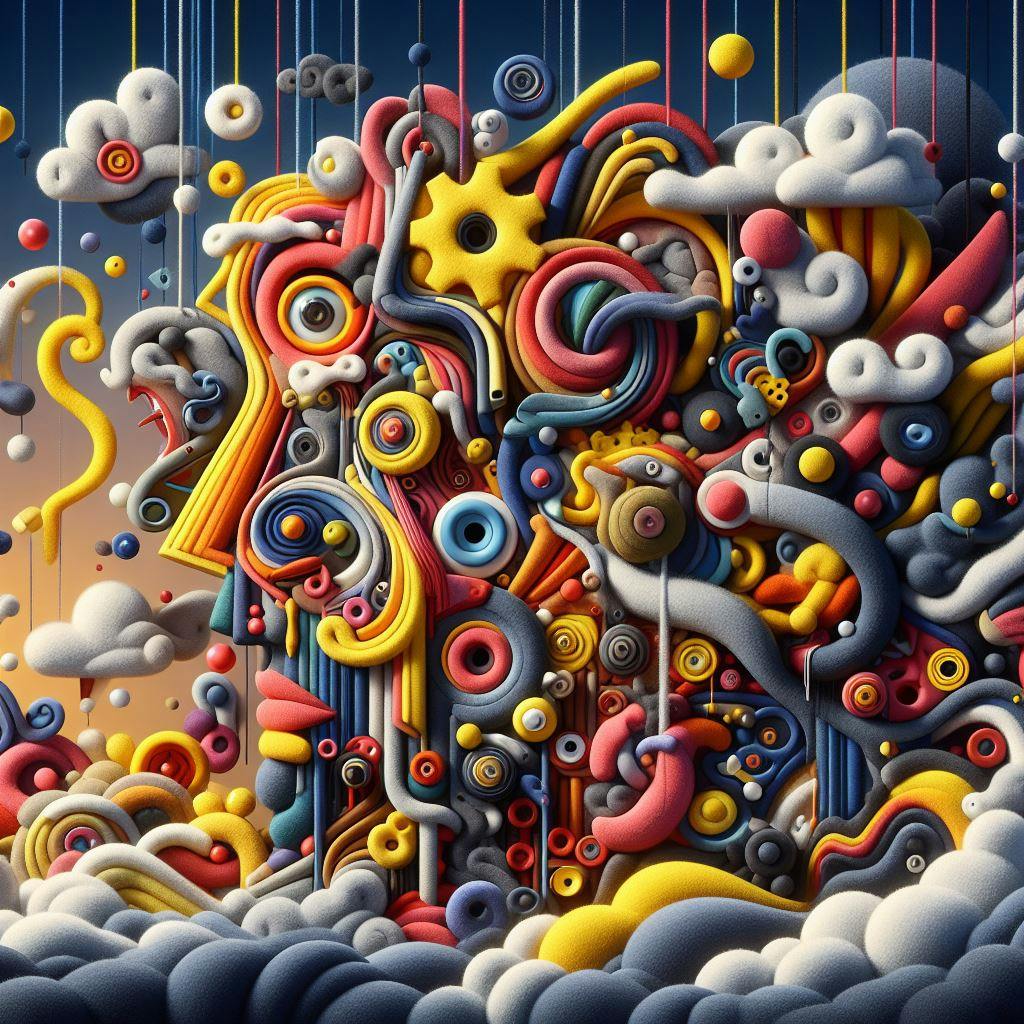Designing Tomorrow's Visions: hard?
Is it the brush strokes, the mouse's precision, or the boundless imagination that shapes worlds on a canvas or a screen? The essence of design transcends mere tools; it's a fusion of art, technology, and a relentless pursuit of innovation.
Though I'm not seasoned in this domain and lack extensive practical expertise, I believe there's value in what I've penned down. This blog reflects on my journey, the lessons I've gleaned, and the experiences that have shaped my understanding thus far. I hope that amidst my limited knowledge, you'll find nuggets of insight that resonate and offer a stepping stone in your own exploration of this field...
Design: what does it take?
Designing: A Canvas for Imagination
Technology and artistry dance together in the process of designing. Drawing freehand or manipulating software isn't enough; it's about defining life concepts or imaginations and creating visual narratives.
"Variety reigns supreme in the realm of design, where a mosaic of perspectives and approaches fuels boundless creativity."
Diversity is king in the world of design, or we could say diversity reigns supreme. In addition to software and tool-driven graphics, AI-driven graphics, and hand-drawn sketches, every aspect contributes to the tapestry of creativity. The designer isn't merely a creator but a storyteller and writer, shaping narratives through colors, lines, and pixels with unwavering consistency and artistry.
In the world of design, it's not just about what you know but how you can uniquely weave the tapestry of creativity and imagination.

The Effects of Design on the Real World
Consider the impact of design in our daily lives.—how a user-friendly app revolutionizes our digital experiences, or how a well-designed logo becomes the face of a successful brand. From the sleek architecture of buildings to the seamless interface of a website, design permeates every aspect of our existence.
For instance, Apple's intuitive designs transformed technology, making complex devices accessible and appealing to the masses. The elegance of their products transcends functionality to become a seamless blend of form and purpose.
The Heart of Design: Creativity and Empathy
At the core of exceptional design lies creativity—a boundless imagination that defies the limitations of technical knowledge. A good designer possesses the ability to envision beyond the conventional, to think innovatively, and to breathe life into ideas.
Empathy, too, is a crucial aspect. Understanding human emotions, needs, and behavior is pivotal in creating designs that resonate deeply with users. This empathetic connection often stems from life experiences, observations, and an inherent understanding of people.

Breaking Barriers: Design as an Inclusive Realm
The democratization of design tools has ushered in an era where everyone can explore their creative potential. Design is no longer confined to the realm of experts; it's a playground where amateurs and professionals alike can experiment, learn, and innovate.
Embracing Diversity: The Power of Varied Perspectives
A good designer doesn't necessarily conform to a singular path. Instead, they embrace diverse perspectives, drawing inspiration from different disciplines—art, literature, psychology, and even everyday experiences. This fusion of knowledge breeds unique designs that transcend conventional boundaries.

"The Essence of Skillful Adaptation"
While technical skills are undoubtedly beneficial, the ability to adapt and evolve in a rapidly changing landscape is equally crucial. A good designer remains open to learning, unafraid of exploring new tools and methodologies, and readily adapts to emerging trends.
Learnings and Insights Along the Creative Path
"Neglect the Constraints of Conformity; Embrace Innovation"
Design thrives on pushing boundaries and challenging norms. To truly innovate, one must break free from the shackles of conformity and explore uncharted territories. Picasso once said, "Learn the rules like a pro, so you can break them like an artist." It's in these moments of defiance that groundbreaking ideas take shape.

"Lead with Vision; Execute with Precision"
Vision fuels creativity, but execution brings it to life. Clear vision guides the design process, while attention to detail and precision breathe authenticity into every creation. Balancing imagination with technical expertise is the hallmark of an exceptional designer.
"Collaborate and Cooperate; Unleash Collective Genius"
Design is a collaborative symphony. Embrace diverse perspectives, collaborate with fellow creators, and harness the power of collective creativity. Steve Jobs encapsulates this notion perfectly: "Great things in business are never done by one person; they're done by a team of people."
Embracing Creativity: Beyond the Boundaries of Design Knowledge
Design, at its core, isn't merely a product of technical mastery; it's a manifestation of creativity, innovation, and an innate understanding of human emotions and needs. Contrary to the common belief that one needs extensive design knowledge to excel in this field, being a good designer transcends the boundaries of technical expertise.
The Myth of Boundless Expertise
Often, there's a misconception that a designer's prowess hinges solely on their technical skills—mastery of software, a deep understanding of design principles, or years of formal training. While these are undoubtedly valuable, they don't singularly define a good designer.

What Aspiring Designers should avoid?
Relying Solely on Technical Skills: Don't rely solely on technical prowess. Creativity, empathy, and innovation are equally—if not more—important in crafting exceptional designs.
Overlooking Collaboration: Avoid working in isolation. Collaboration brings diverse perspectives and enriches the creative process.
Stagnation in Learning: Don't get complacent with your skillset. The design landscape evolves rapidly; continuous learning is essential to stay relevant.
Ignoring User Experience: Design isn't just about aesthetics; it's about functionality and user experience. Ignoring the end user's needs can lead to ineffective designs.
Being Afraid to Experiment: Fear of failure can hinder innovation. Don't be afraid to experiment and explore new techniques or ideas.
Prioritizing Trends Over Timelessness: Trends come and go; strive for designs that stand the test of time. Don't prioritize fleeting trends over timeless aesthetics and functionality.
Underestimating the Power of Empathy: Empathy drives meaningful designs. Avoid overlooking the emotional connection users have with designs; understanding their needs is crucial.
Disregarding Feedback: Constructive criticism is invaluable for growth. Don't dismiss feedback; instead, use it as a tool for improvement.
Losing Sight of the Big Picture: Sometimes, focusing too much on minute details can obscure the overall vision. Don't lose sight of the broader context and purpose of your design.
Neglecting the Impact of Design: Design has real-world consequences. Avoid creating designs without considering their potential impact on society, culture, and the environment.
Conclusion- Navigating Challenges in the Designing Odyssey & Redefining the Paradigm of Design Excellence
"When to Adapt, When to Persist"
In the ever-evolving landscape of design, adaptability is key. Embrace technological advancements, new techniques, and trends. However, it also recognizes the value of timeless design principles that can withstand the test of time.
"Handling: Critique and Feedback"
Feedback is a compass that guides improvement. Embrace constructive criticism, for it's through refinement that designs evolve from good to exceptional. As Vincent Van Gogh said, "I am seeking, I am striving, I am in it with all my heart."

In conclusion, the world of design beckons—a realm where imagination takes flight, creativity knows no bounds, and innovation becomes the harbinger of change. Aspiring designers take heed: embrace the blend of art and technology, foster collaboration, and dare to dream beyond the confines of convention. For in the canvas of design, the masterpiece of tomorrow awaits its visionary creator.
The other conclusion is that being a good designer is a testament to the fusion of creativity, empathy, adaptability, and an insatiable thirst for innovation. While technical knowledge undoubtedly serves as a foundation, it's the amalgamation of diverse experiences, creative thinking, and an understanding of human nuances that truly distinguishes a designer.
So, to all aspiring & burgeoning designers out there, at the edge of innovation's canvas—embrace your creativity, cultivate empathy, and dare to dream beyond the confines of traditional expertise, and may your creativity dance boldly on the blank spaces of tomorrow.
Let your visions soar, your colors blend seamlessly, and your innovations ripple through the tapestry of design.
...................................................................................................................................................
All the best, future architects of innovation and creators of the extraordinary!

...............................................................................................................................................